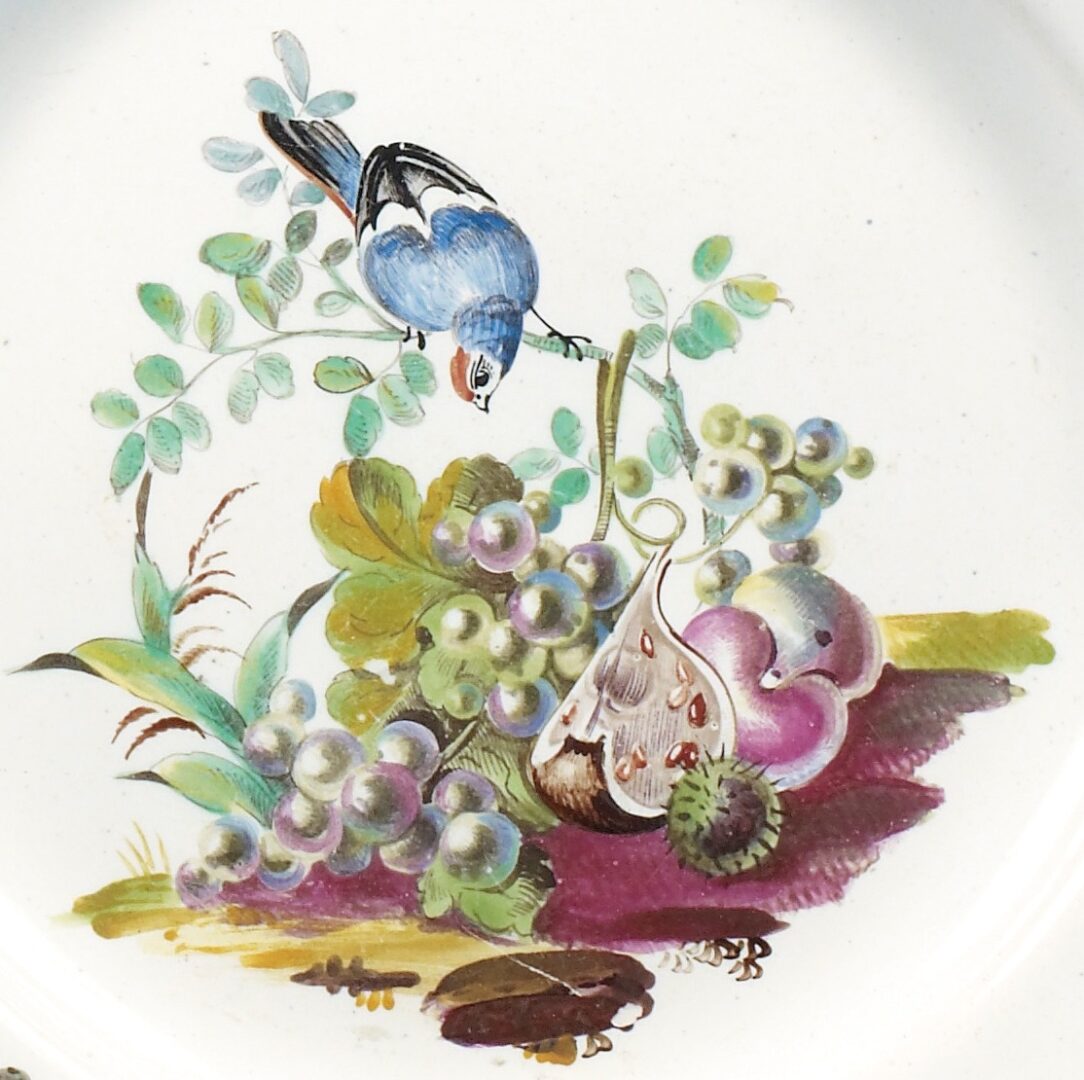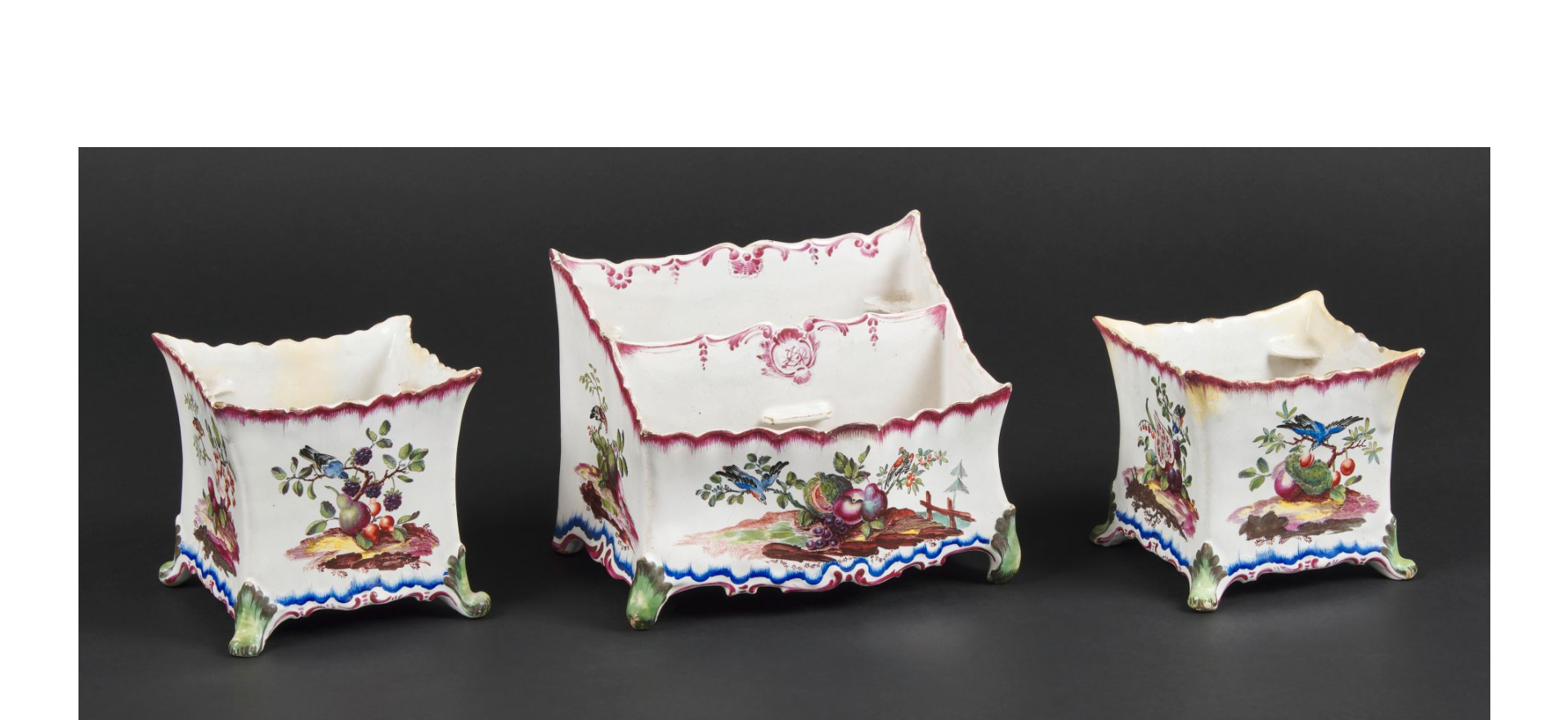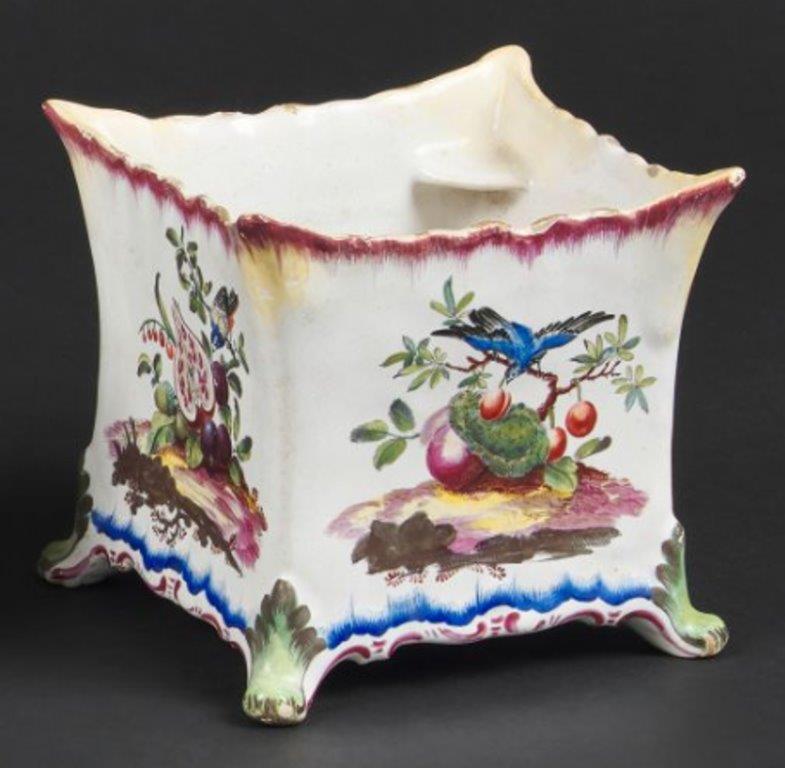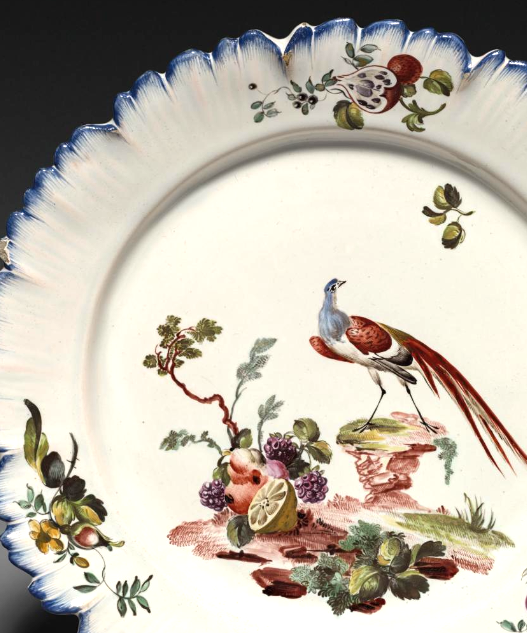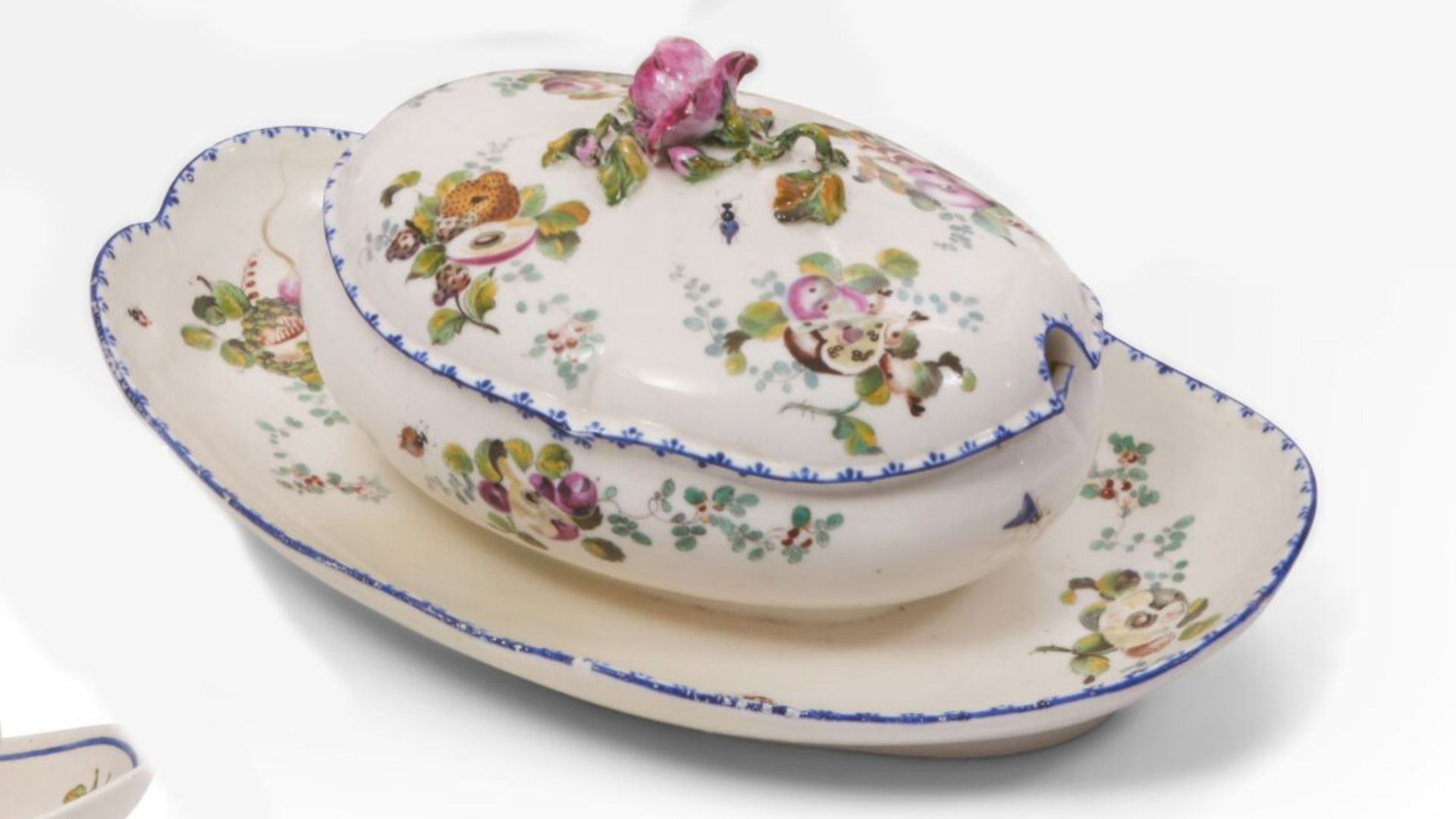My previous blogpost introduced some new attributions to Fidelle Duvivier in the older French ceramic collections of the Victoria & Albert Museum in London.(i) One was a soft-paste porcelain Mennecy ewer painted with birds in foliage, featuring a blue and black-feathered bird quite like the one visible in example 1. These Sceaux plate details have again helped me to identify some new Duvivier work that was auctioned in France during the past three years.
As I mentioned in an older blogpost (“The Gentle Art of Forcing Bulbs” from March 16, 2018), the smaller square bulb pot made by Sceaux (2, 4) was known as a caisse à oignons, and it held a flat, square inserted plate with four holes that rested on the inside corner supports. The inserts held little bulb cups that were placed on the openings of the inserts. These cups also had holes large enough for the bulb roots to hang from each cup and reach the water in the vessels.
3 (with 2, 4) An ensemble of three Sceaux faience flower bulb vessels, c. 1766-68, decorated by Duvivier in polychrome with birds, foliage and fruits, and a peignés bleus or combed edge in blue
on the bases; the same in red on the top edges. Unmarked. H 16 cm, 19 cm. H 12 cm, L 11 cm. Pescheteau-Badin, Paris (auctioned in January 2021).
4 A Sceaux faience square flower bulb pot, c. 1766-68, part of a set of three (3), decorated by F. Duvivier in polychrome with birds, foliage and fruits, and a peignés bleus or combed edge in blue on the base; the same in red on the top edge. Note the cut fig painted on the side. Pescheteau-Badin, Paris.
5 Portion of a Sceaux faience plate decorated by Duvivier and showing a cut fig painted on the upper rim. Cleveland Museum of Art, Cleveland Ohio.
6 A Mennecy soft-past porcelain sugar bowl with cover attached to an oval stand, decorated ca. 1766-68 by Duvivier in polychrome with foliage and cut or whole fruits, with blue rim decoration on the cover and stand, and a rose-shaped finial. Incised D. V. mark. L 24 cm. Pescheteau-Badin, Paris (auctioned in June 2023).
NOTES
(i) Blogpost of May 2, 2022. Mennecy ewer, Victoria and Albert Museum, London (C.318-1909). See https://collections.vam.ac.uk/item/O307784/jug-duvivier-fidelle/ and https://collections.vam.ac.uk/item/O99352/teapot-and-cover-duvivier-fidelle/
(ii) See https://chjacob-hanson.com/bird-sightings-in-paris-and-dijon/
(iii) See https://chjacob-hanson.com/the-gentle-art-of-forcing-bulbs/
(iv) For further examples see Charlotte Jacob-Hanson, In the Footsteps of Fidelle Duvivier (Tucson, Arizona: Westpress, 2016).
7 Detail of a second Sceaux faience plate showing the bird and fig motifs.
Photo: Millon-Associés, Paris

